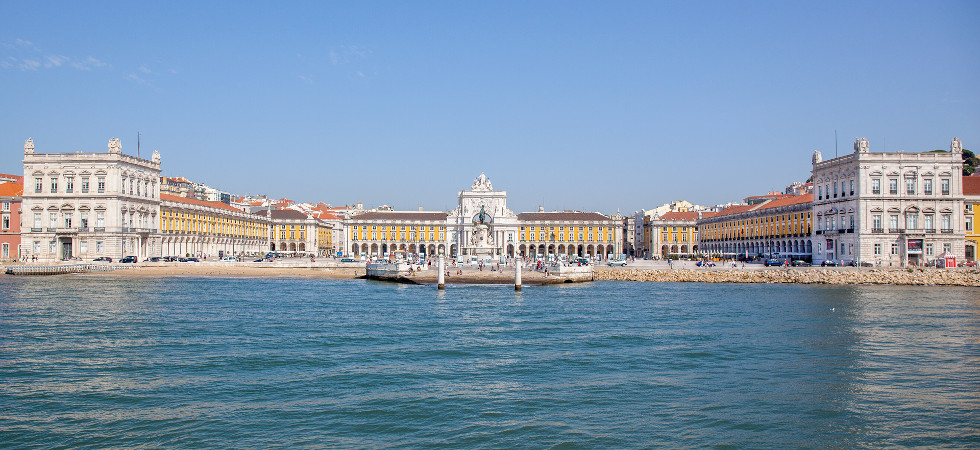Words by Adam Jacot de Boinod
‘What beauties doth Lisboa first unfold,’ gasped Byron’s Childe Harold and certainly the city is highly reminiscent of Paris decades ago. Her special quality consists partly from the exhilarating light falling on her blue-tiled walls and white stone pavements: a clarity assisted by cloudless skies. Indeed the climate was fabulous as, over the New Year, the sun not only shone it penetrated with a refreshing breeze coming off the Atlantic off whose coast Lisbon is the only European capital.
I spent my first night fully immersed at a fado venue Sr Vinho on Rua do Meio à Lapa and met with the owner Filipa Gordo, the daughter of Jose Luis a poet and the legendary fado singer Maria da Fé.
Over a glass of S. Sebastião Tinto (red) to go with my olives and cheese followed by S. Sebastião Branco (white) to go with my mango mousse, Filipa told me of the poems both old and new that they sing. The line-up included two women in starkly contrasting styles. Aldina Duarte stood still and upright as she bellowed forth while Vanessa Alves was ever the actress, extravert and gesticular.
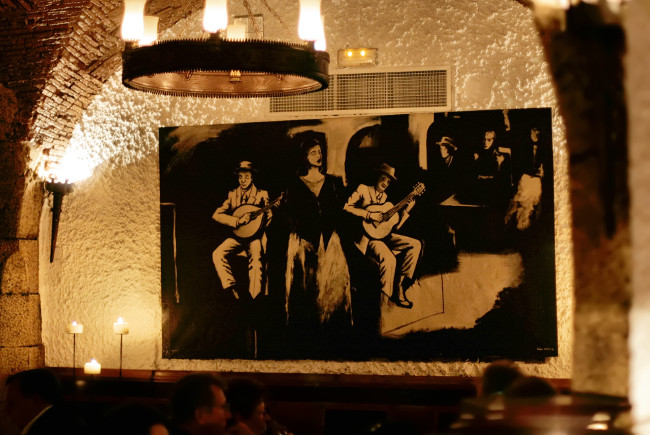
They sing out to a wall, to their fellow musicians and occasionally to the audience directly. The accompaniment, typically comprising of a viola and Portuguese guitar, often offsets their vocal ferocity by playing jolly, gentle bracing tunes.
The next day I was in Belém and near Lisbon’s main attraction, the Jerónimos Monastery is the Pastéis de Belém, a large, airy bakery-cum-café and a huge hit with the tourists. It makes those lovely egg tart pastries dusted with cinnamon (‘pastel de nata’) the city is famous for and their particular recipe is eagerly sought after but is known by only three people causing them never to travel together.
From here I found a row of outdoor touristic eateries from which to choose my lunch and from where the fresh air came off the estuary and the orange trees were laden with produce proving too tempting for one local to ignore.
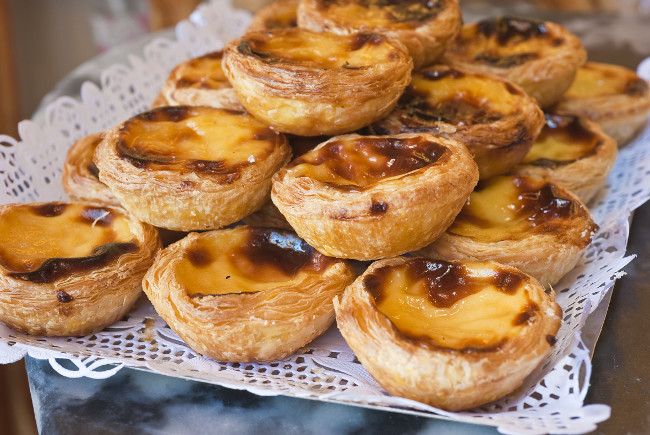
I stayed at the Lapa Palace. A study in elegance, this perfectly pink hotel has the feel of a well-run private house. I had dinner in a gorgeous ‘peachy pink’ room, a colour supposedly symbolising nobility, beneath Murano chandeliers suggesting the 1920s era of good times and affluence.
Chef Hélder Santos offered an authentic menu. I had a Bolete Cannelloni, not in fact pasta but crab with beetroot spheres and vinegary radish purée. I drank Quinta de Santiago with my fish and seafood casserole that was scented with coriander and came with vaporised white rice. For dessert I chose Portuguese cheeses, served with dried fruits, tomato relish and traditional jams and instead of pudding wine I had Vieira de Sousa port.
Set beside a lovely indoor pool with little chlorine and long enough to do some meaningful lengths is the hotel spa for which, for my treatment, tempted though I was, as always by the ‘hot stone therapy’, I chose the ‘destress detox muscle massage’. Ninety minutes of kneeding and prodding was also a meaningful length!
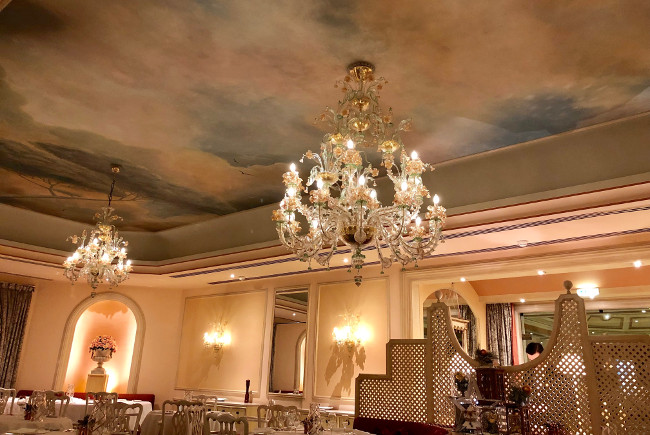
The whole of Lisbon is like a tile museum with its colourful panels. For the real thing I went to the Museu do Azulejo which is for me that rarity, namely a perfect museum. It’s unspoilt with a discreet and understated entrance. It’s the ideal size with two floors. It was originally a convent and its calm aura persists.
The building is as beautiful as the exhibits many of which are in situ which enhances the experience. There are sheds with boxes of individual tiles, work in progress as they wait to be joined like a jigsaw.
Two courtyards enticed me and enveloped me into their fold. Even the café had beautiful tiles depicting hams, fish and game and the garden was well kept but not too trimmed.
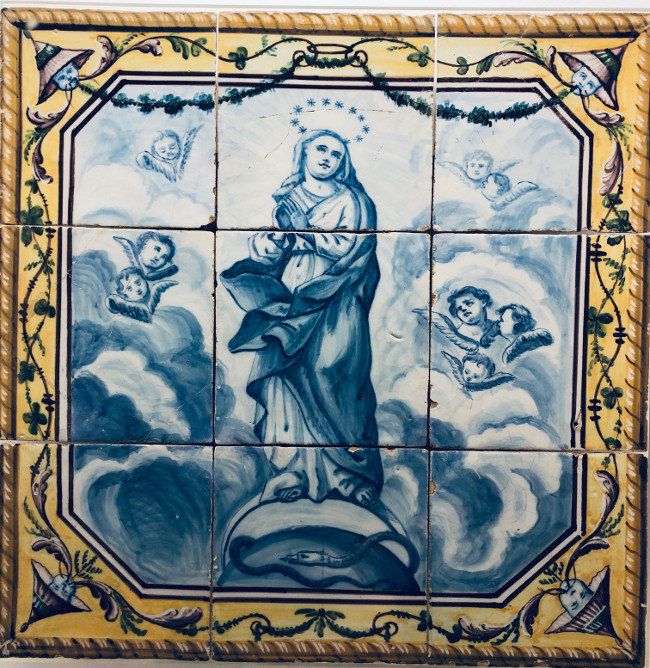
Shopping in Portugal is comparatively cheap. I got (admittedly from a sale) a set of clothes that would have cost twice as much in London. Lisbon still has a plethora of small independent boutiques that specialise in a singular product such as hats, gloves or cheese. Or even eels as Factory Of Eels on Rua da Prata manage to package its products, which wouldn’t normally be to everyone’s taste, so well that even they would surely be tempted.
For chocolate there’s an amazing presentation at Chocolataria Equador on Rua da Misericórdia and for coffee there’s Café A Brasileira (The Brazilian Lady Cafe) on Rua Garrett with its original panelled ceiling decor where once writers gathered and now tourists flock. Property has gone up 30% in the last two years as the secret of this enchanting city has finally been revealed. Go now before things might change.

FACT BOX
Classic Collection Holidays (classic-collection.co.uk) offers 3 nights at Lapa Palace, Lisbon from £959 per person. Price based on 2 adults sharing on a bed & breakfast basis and includes return flights from London Heathrow to Lisbon and private transfers.
Adam had further support from stanstedexpress.com and holidayextras.co.uk (who offer airport lounges at all major UK airports and many international destinations).
Adam Jacot de Boinod was a researcher for the first BBC television series QI, hosted by Stephen Fry. He wrote The Meaning of Tingo and Other Extraordinary Words from around the World, published by Penguin Books.












